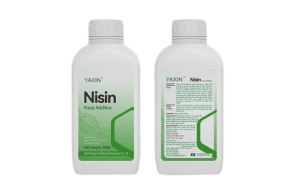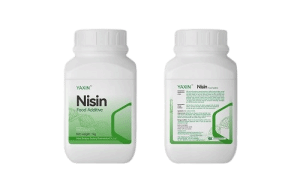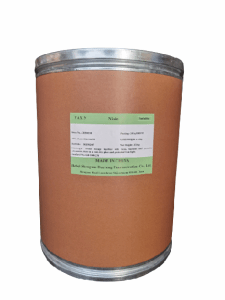
 CONTACT
CONTACT
- Linkman:Linda Yao
- Tel: +8618231198596
- Email:linda.yao@dcpharma.cn
- Linkman:CHARLES.WANG
- Department:Overseas
- Tel: 0086 0311-85537378 0086 0311-85539701
Application of Natamycin in Food Processing
TIME:2025-02-17Natamycin is a compound formulation that combines natamycin with lactose. It is primarily used in food processing for the following applications:
I. Dairy Products
Yogurt: Adding natamycin to yogurt production can effectively inhibit the growth of yeast and mold, extending the yogurt’s shelf life while maintaining its flavor and texture. The typical dosage is 5 - 10 mg/kg, which can prolong the refrigerated shelf life by several days to weeks.
Cheese: For various types of cheese, natamycin can be sprayed or applied to the surface, or added directly to the raw milk during production. It prevents mold growth on the cheese surface, avoiding issues such as mold contamination and discoloration. At the same time, it does not affect the fermentation and maturation process, thereby preserving the quality and taste of the cheese.
Cream: Adding an appropriate amount of natamycin to cream helps inhibit microbial growth, preventing spoilage and rancidity. This ensures good stability and quality during storage and use.
II. Baked Goods
Bread: In bread production, natamycin can be incorporated during the dough preparation stage. It helps inhibit mold growth during the cooling and storage phases after baking, extending shelf life while maintaining softness and freshness. A typical dosage of 10 - 20 mg/kg can extend the shelf life of bread at room temperature by 2 - 3 days.
Pastries: For cakes, mooncakes, and other pastries, natamycin can be applied to the surface through spraying or coating, forming a protective layer that effectively prevents mold and yeast contamination. This helps maintain the appearance and texture of pastries and prolongs their shelf life. Its preservative effect is particularly significant in high-sugar, high-fat pastries.
III. Meat Products
Sausages: During sausage processing, natamycin can be added to the meat mixture before stuffing or sprayed onto the sausage surface. It inhibits mold and yeast growth, preventing spoilage and off-flavors caused by microbial contamination. It does not negatively impact the color, flavor, or texture of sausages, helping to maintain their quality and extend shelf life.
Ham: For ham products, natamycin can be applied via soaking or coating to effectively inhibit surface microbial growth, preventing mold and spoilage. This extends storage time while preserving the ham’s unique flavor and texture.
IV. Beverages
Fruit Juice Beverages: Adding natamycin to fruit juices can inhibit the growth of mold and yeast, preventing fermentation and spoilage. It also helps maintain juice clarity and taste, extending shelf life. A typical dosage of 5 - 10 mg/L is sufficient for effective antimicrobial protection.
Fermented Beverages: In beverages like wine and beer, natamycin can be added after fermentation to inhibit the growth of unwanted mold and wild yeast. This ensures product stability and quality, preventing issues such as turbidity and sedimentation.
V. Other Foods
Sauces: In sauces such as ketchup, salad dressing, and mayonnaise, natamycin effectively inhibits mold and yeast growth, preventing spoilage and off-flavors while maintaining color and texture, thereby extending shelf life.
Soy Products: For tofu, dried tofu, and other soy-based products, natamycin can be applied via soaking or spraying. This helps prevent microbial growth on the surface, extending shelf life while preserving texture and quality.
- Tel:+8618231198596
- Whatsapp:18231198596
- Chat With Skype







